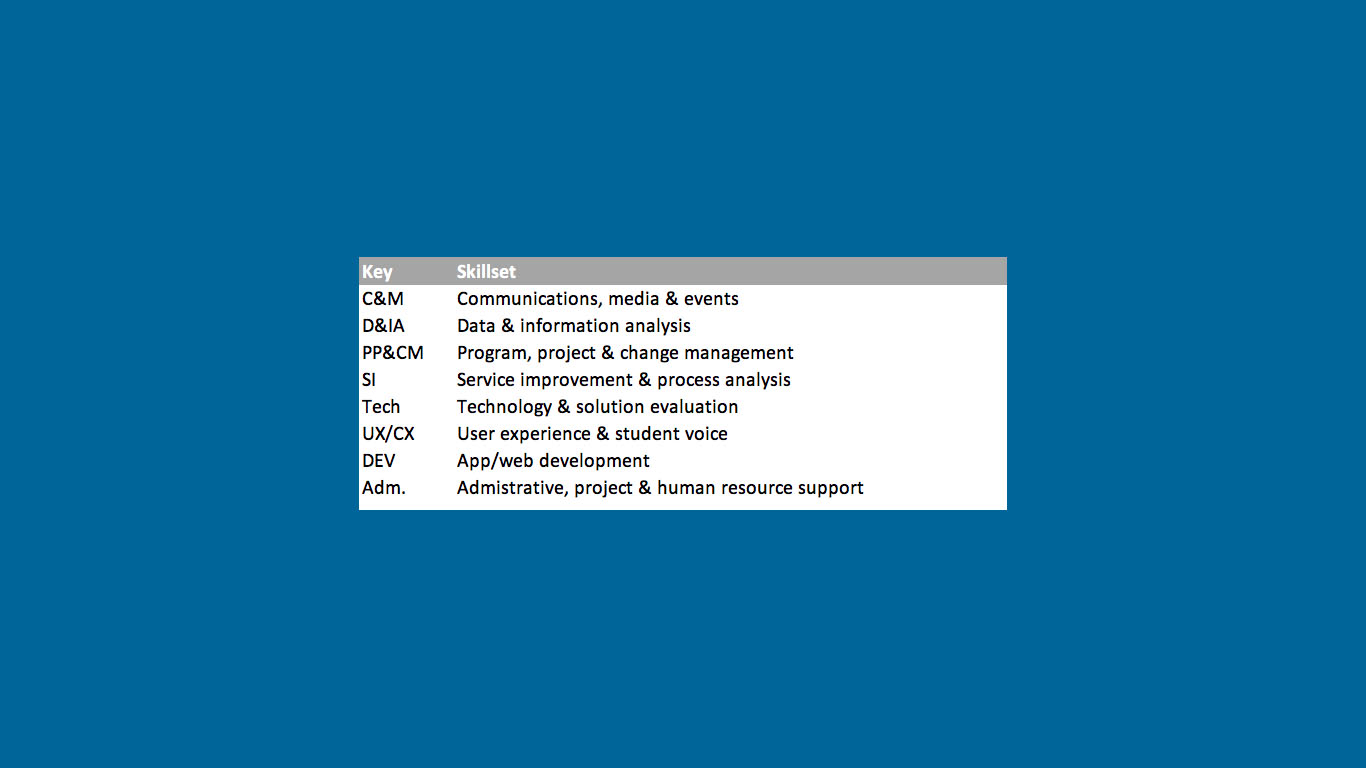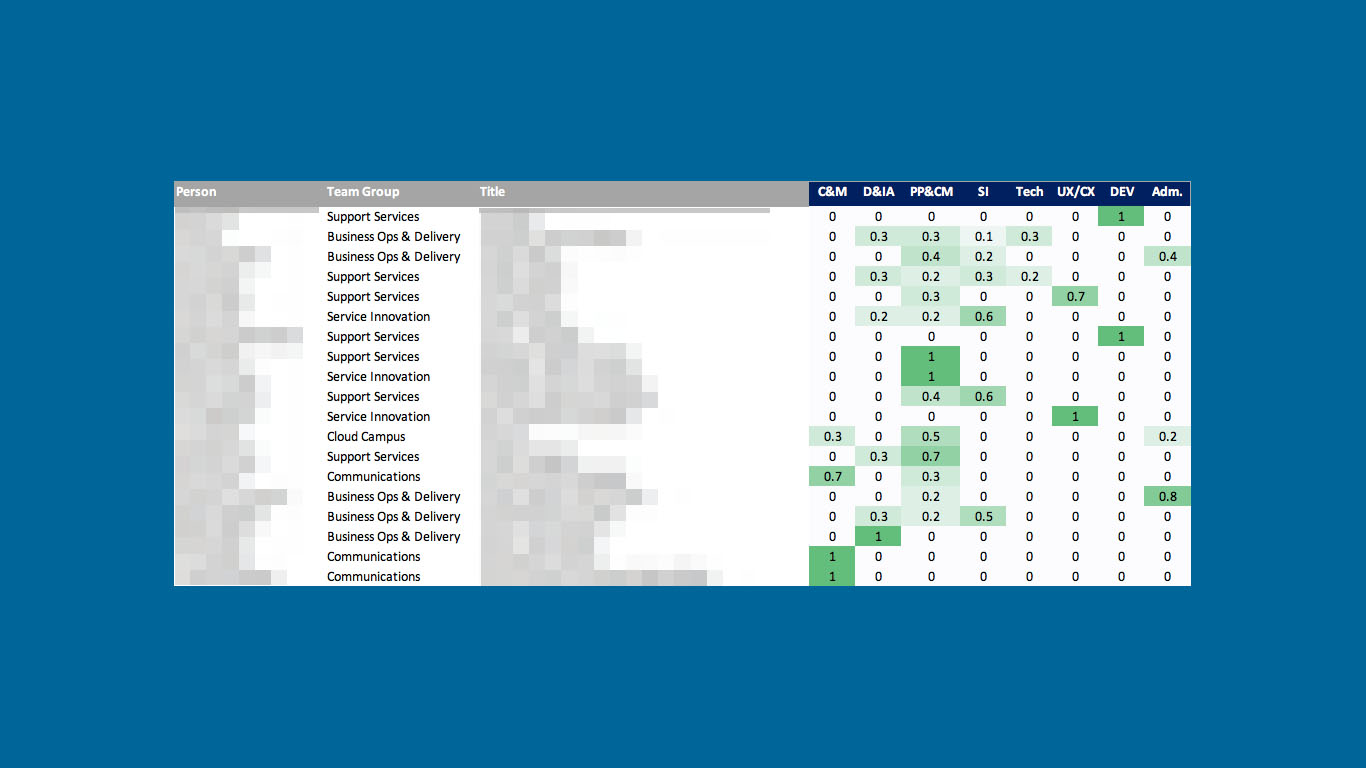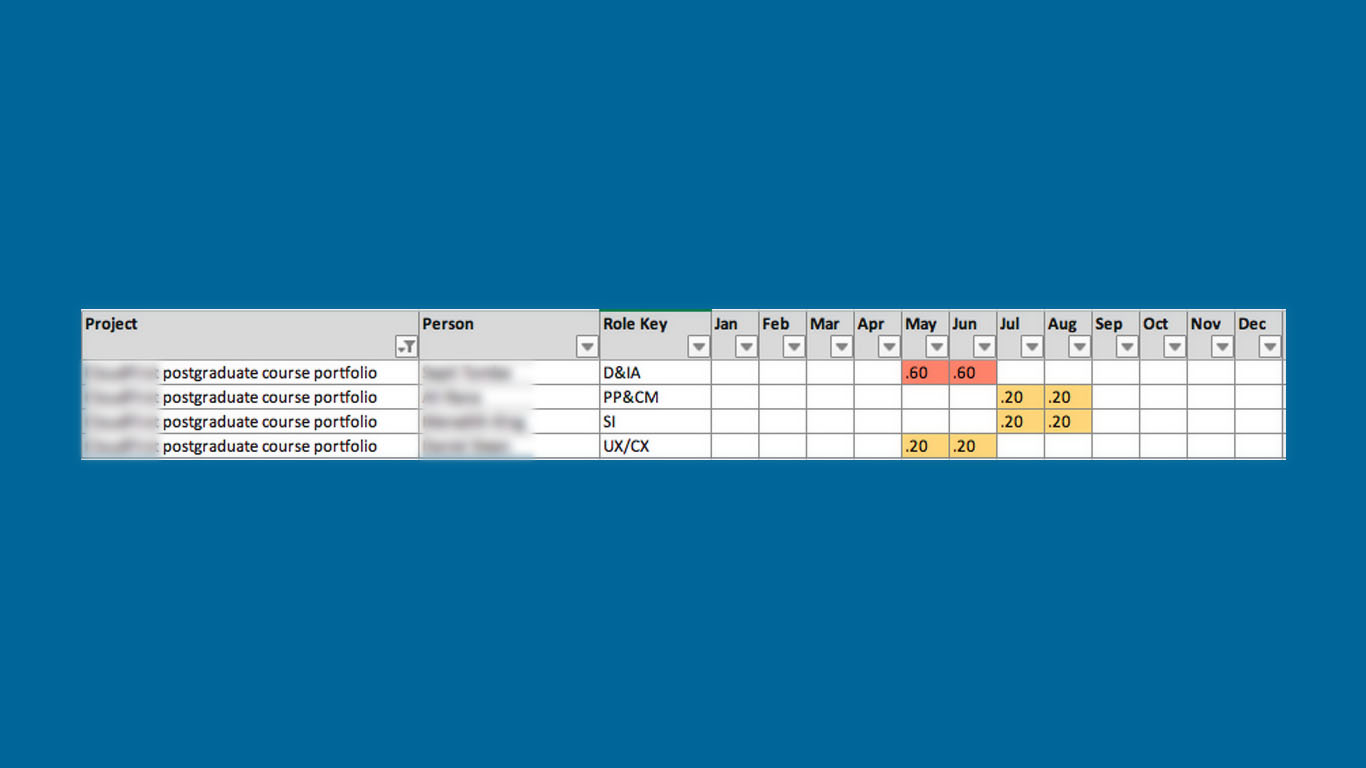Resourcing planning using Skills Map
Our team was quite diverse. With around 20 members, we had a unique mix of skills and expertise around. Collectively, we were regarded as ‘subject matter experts’ in online education.
Despite a number of exciting projects underway, we saw employee churn. A few wonderful colleagues had joined and left the team in the year. It was also the time of the year we were getting ready to plan for the next year.
My task was to conduct a resource planning exercise and advise the Director about the readiness of our team for the next year. Working with the team, we started with a Skills Key and a Skills Map
Skills Key was a list of all skills relevant in our team. Coming up with such a list was collaborative exercise. We grouped common skills together and added acronyms to use in next step.
Skills Map was a tabular view of how people in our team mapped across the skills. Most people in our team were good at more than one skill.
Skills Map provided a holistic view of skills available in our team. The analysis was detailed and backed up with data. Other than being useful for resource allocation to projects, this approach also helped answer further questions such as
- Where some team members are highly committed, are there others in the team with availability to help?
- Do we have overall gaps we need to fill? if we neeed to hire new resources, what skillset do we need?
- Do we have a consistent pipeline of work (projects)?
Allocating people to projects
Our projects require a set of skills. Each person in the team offers skills in their own way.
Similar to the Skills Map, we also mapped skills required by all our known projects. Then using the Skills Map, we allocated the right people to project timeline. See an example of how skills were allocated across a project in a timeline.
Mapping people to projects and time allowed us to work out how our team was utilised. This helped us focus on the skills needed instead of people. On a project by project basis, we were able to allocate the right people. We were also able to see how each person’s workload compared to others in the team.
Recruiting the right candidates
The approach allowed us to work out the number and type of resources we needed. We recruited two members with a specific mix of skills to suit our plan:
- Data and information analyst
- Program, project and change manager
Note that without the skills mapping approach, we probably would have just hired a project manager rather than focusing on project and change management together.
Other applications of this approach
This approach (Skill Key –> Skills Map –> Projects timeline) allowed us to see our plan in multi-dimensions, people, time, workload and overall pipeline.
As an example, we noticed that a lot of our planned work was ‘stuffed’ in the first few months. This needed fixing to ensure we have a consistent pipeline of projects for the year. So resulted in some re-planning.
Further application of this approach could be related to professional development of the team. For example, arranging trainings or workshops for the skills that will benefit the team most.
Another application is understanding the peak demand periods for certain skills. For example, we might need a Project Manager for only a couple of months so we could outsource that role instead of hiring.


